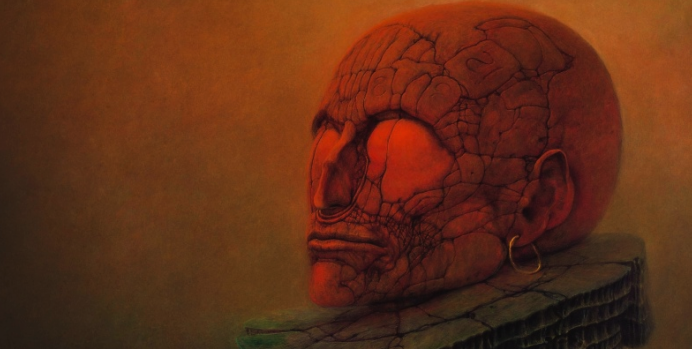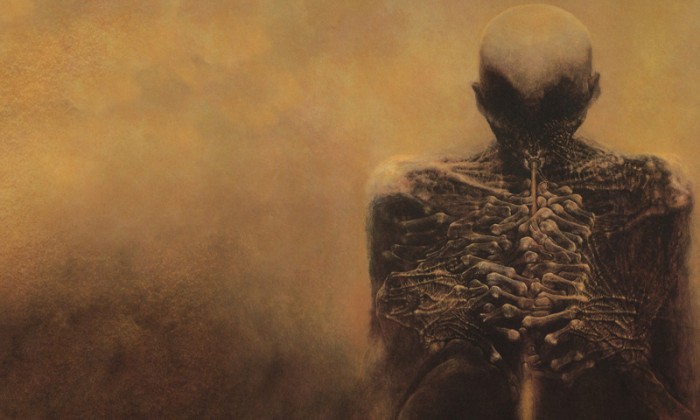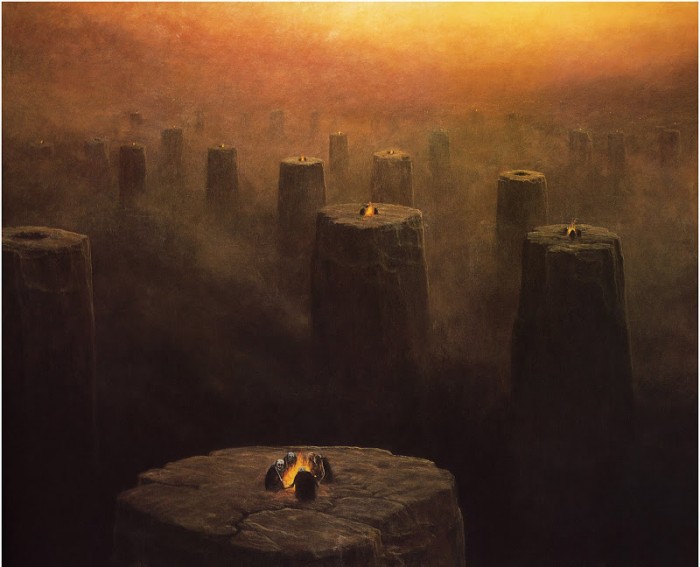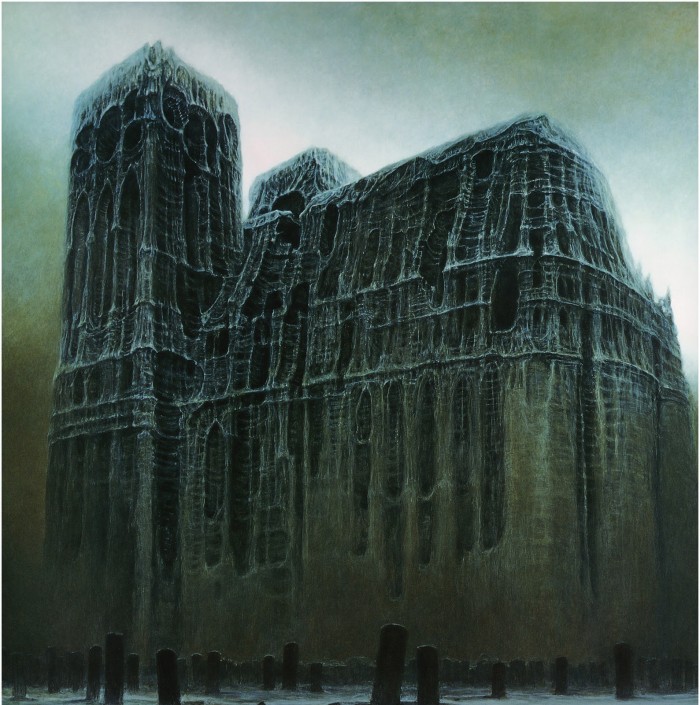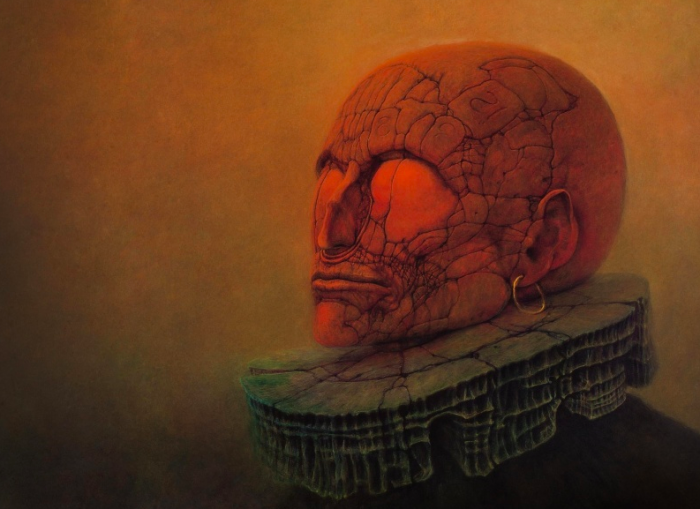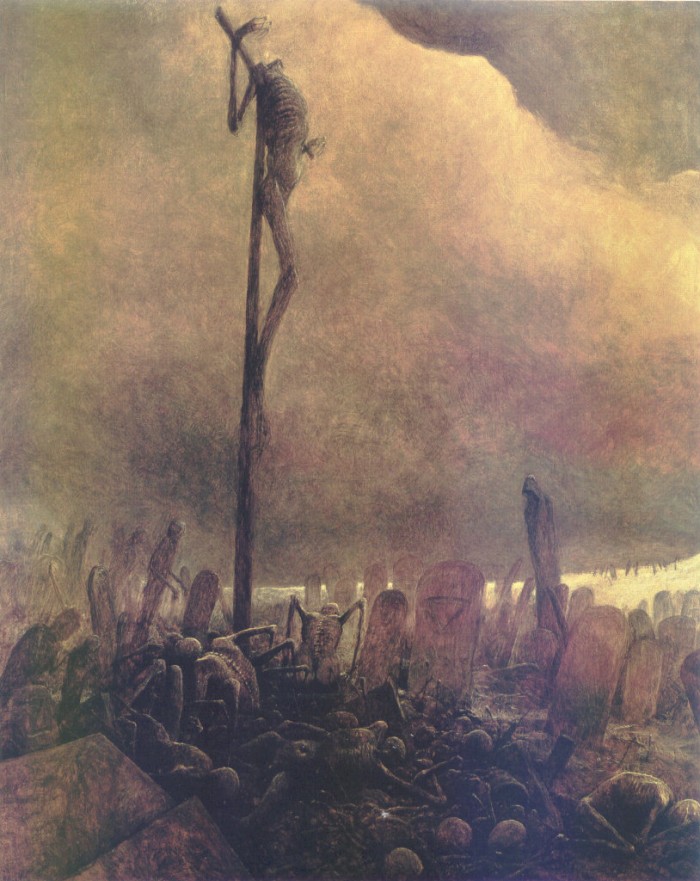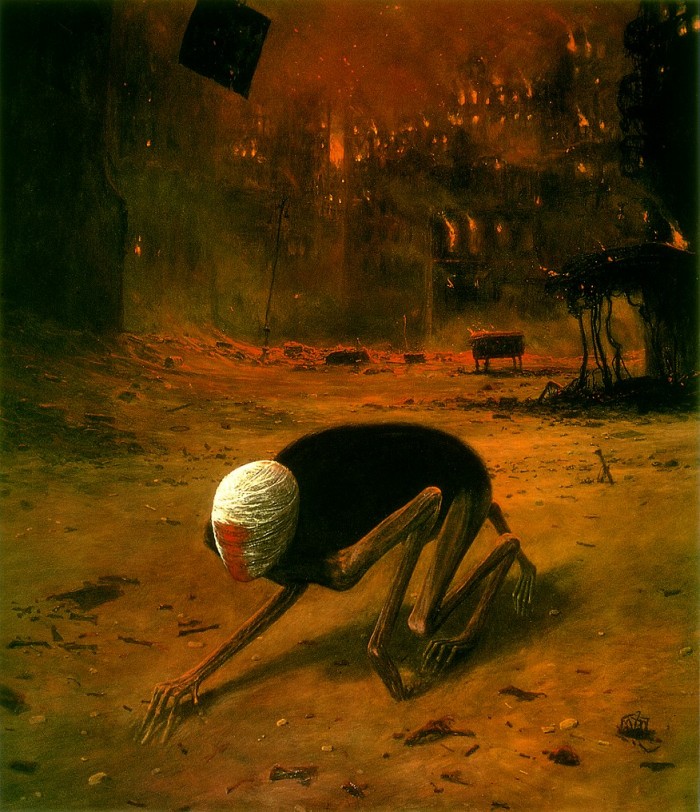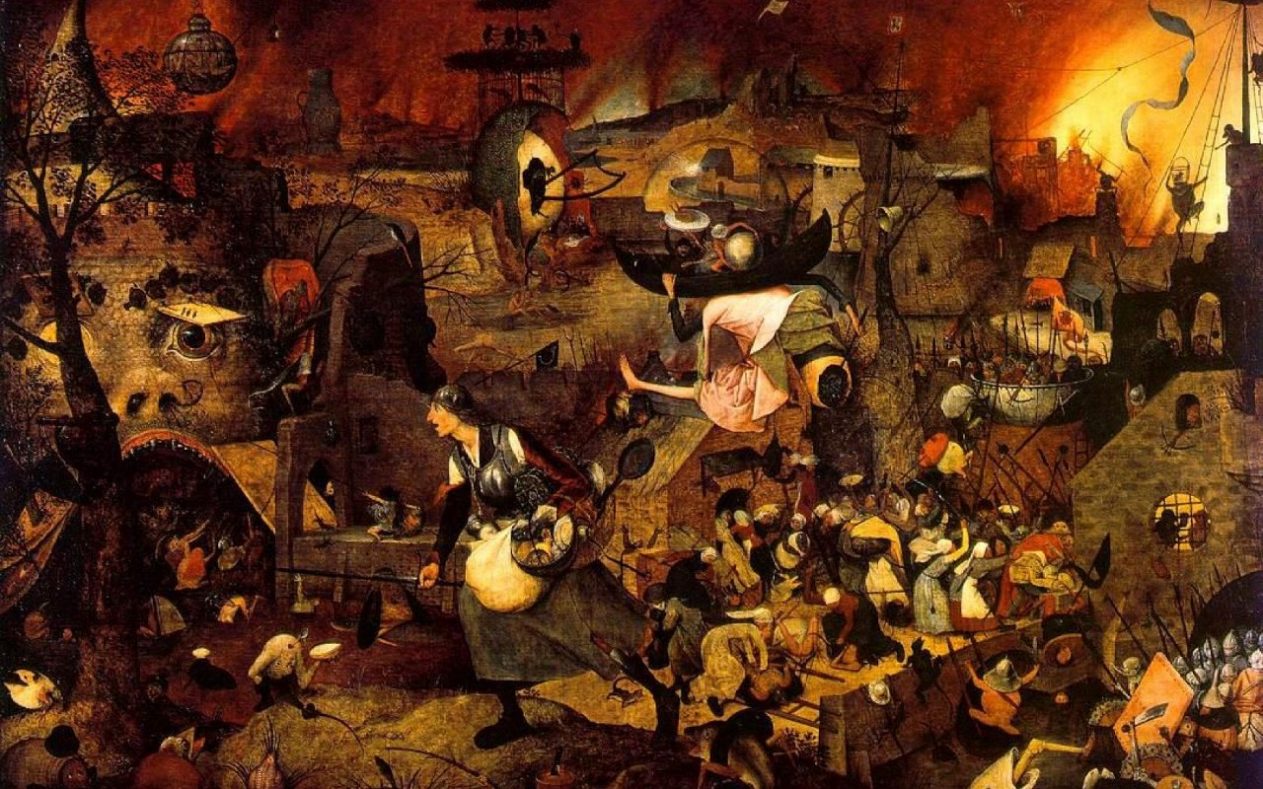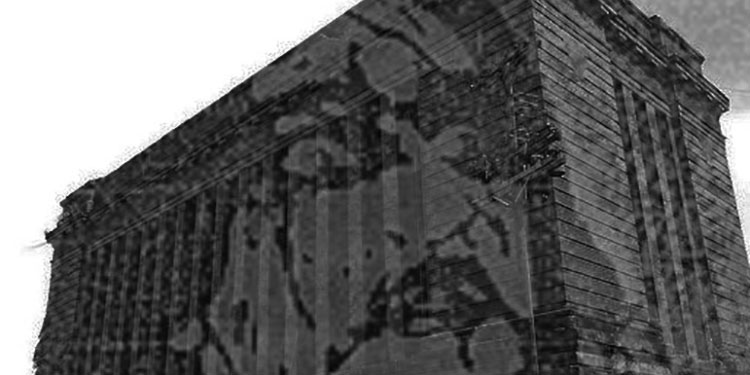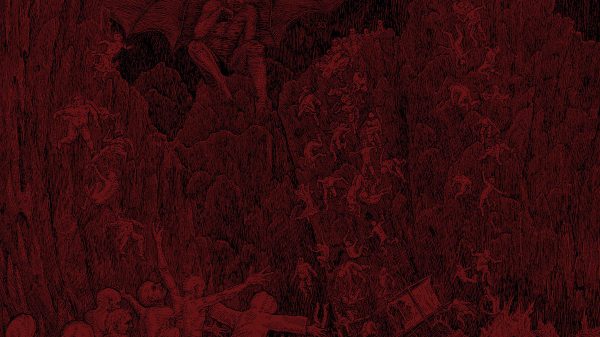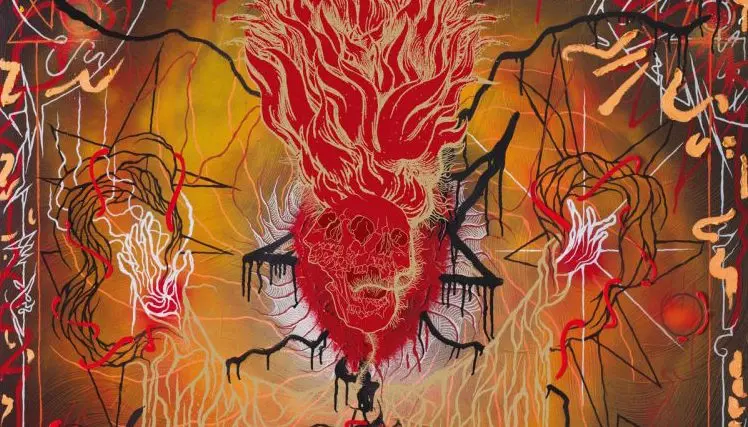The Fantastic Art of Beksinski is a tremendous art book about Polish artist Zdzislaw Beksinski, published by Morpheus International in 1998 (even if my version is a reprint of 2008, three years after he died – murdered at 76 years old). Beksinski is a well known artist whose work is an inspiration to many people, including myself, that’s why I decided to invite you into this book, rather than just showing his paintings, even if paintings will definitely be shown.
There is not a huge amount of information available about his life, but we do learn that even if his “fantastic realist” paintings are what’s most known of him, he also did other type of drawings, photography and even sculptures. James Cowan, who writes the introduction to the book, says some brilliant things about his paintings, things that you definitely feel when you look at them, but can’t quite put words to. What struck me the most were the words “magical light,” which he used to characterize the feeling of Beksinski’s paintings. He describes it as an “orange glow” that is overwhelming the ambiance of it all, wondering if it is “a light of a new dawn or the angry glare of an apocalyptic inferno?”
Beksinski also seemed to intuit something that so many creators fail to understand today: a sense of mystery. Fully and rationally explaining a piece of art is failing to understand that mystery is appealing. If you don’t understand something in the painting or you simply wonder why things are how they are, work out your own explanations and create your inner world. Trust me, a solid explanation is always disappointing, and it will not intrigue the viewer.
Now let’s experience some of these “nightmares frozen in amber”.
“I would compose music for my first thousand years in heaven.”
“I paint them completely naively just as I would be taking photos in my own dreams.”
Beksinski first started painting when he realized that it was, for him, the only way to survive. Not in the way of “I need to paint to be able to live,” but more in the immortality side of things. He wanted to survive through his work, to be able to live indefinitely as an artist. It’s kind of like the ending of the movie The Holy Mountain by Alejandro Jodorowsky, when – spoiler – he told them that the movie they are in is the only way to achieve immortality, because even if you die physically, you will still be alive in those films.
“I paint to leave something permanent after my death.”
When he paints, he likes to start with a theme, a symbol, or an environment that everybody knows, and then he twists it in his own way to pervert the habits of the viewer. Taking something we are all familiar with and adding variations that will create a whole new world, his whole new world.
“Everything is doomed to disappear with time.”
About the interpretation side of his paintings that we were talking about earlier, he alludes to that later in the book, regarding big life questions (without specifying). Beksinski explains that you have to find your own answers to be able to move forward, and not absorb the sayings of some self-proclaimed guru, to be able to truly know who you are. Every door that leads to the next step of your life is individual, and somebody else’s way of living is not going to get you through it. He also explains some of his dreams and how they inspired him, with the fact that in the dream everything is acceptable until you wake up, and only then you’re terrified.
“Blood is not blood here, pain is not pain, crime is no crime.”
“To avoid silence I am ready to switch on the vacuum cleaner.”
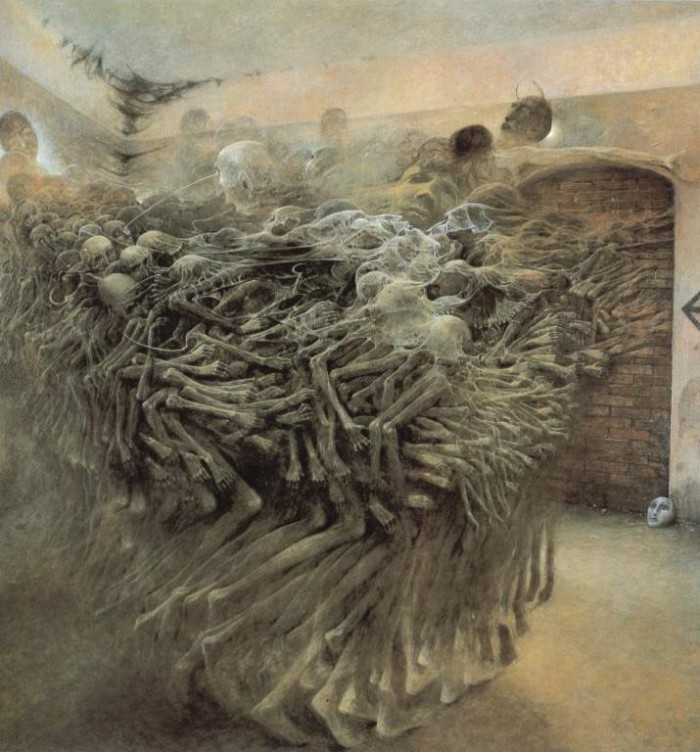
“I am primarily inspired by music.”
“I can imagine a beautiful painting which depicts a hanged person and an awfully drab one of Venus taking a bath.”
“Meaning is meaningless to me.”
Obviously, the book isn’t perfect, for there are so many more amazing paintings of Beksinski’s that could have been in there, but any sort of selection process would have been extremely tough. The only thing that bothers me in this book is the fact that there are no names under the paintings – but maybe they were never named by the man himself. That and some curious color choices for some backgrounds. Anyhow, if you like the color palette of Goya or JW Turner, and the style of Barlowe, you might need to check this guy out, outside of this article.


